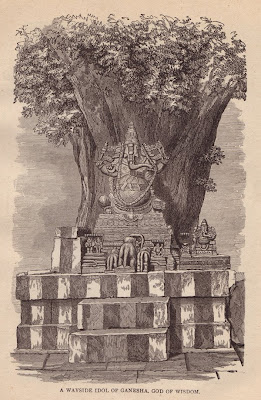
It's been said that those who do not learn from history are doomed to repeat it. Well, I just discovered an interesting piece of New Hampshire history that might have saved me untold amounts of grief had I learned it a dozen years earlier.
Wouldn't you know that the state of New Hampshire's first official bamboozler was named Waldron. I learned about it from a very interesting book published in 1917 written by Clifton Johnson (1865-1940) titled
New England: A Human Interest Geographical Reader. I first saw it on the
Internet Archive where you can read the whole text.
Johnson's lively account of the early history of the Dover area is interesting in particular due to his sympathetic description of the plight of the Indians. (Click on any page to enlarge).

"For a long time the leading man of the province was Richard Waldron of Dover, and he was at length made sergeant-major of its military forces. He was largely engaged in trading with the Indians, and though Puritan in his religion, cheated them at every opportunity. It is said that he did not cross out their accounts when they paid him, and that in buying beaver skins he would use his fist as a balancing weight against the skins put on the opposite side of the scales and claim it weighed a pound."
"Another charge against Major Waldron was that he had gone to some of the Indians when they were at peace with the English and taken away their guns, for lack of which several of them starved to death. It was also asserted that he gave drink to certain Indians, and when they were drunk killed them."

On Waldron's orders two hundred Indians were carried off to Boston where several were executed. The others were sold into slavery. Some twelve years later Indian warriors attacked Waldron while asleep at home. Though eighty years of age he put up a fight. One of the warriors stunned him with the blow of a tomahawk. Then they seized him, put his arm-chair on the dining-room table and bound him in it. They smote Waldron with their knives saying with each stroke, "I cross out my account !"
Samuel C. Stevens version of the incident related in his
Sketch of Dover, N.H. (1833) is even more graphic. You can read the text on the site of the
Dover Public Library.
I'd love to visit the
Clifton Johnson archives out in Amherst, Massachusetts. Johnson was a self-styled folklorist, an illustrator, photographer, author, and editor who wrote over 125 books.
My copy of Johnson's
New England contained some aged four-leaf lucky clovers pressed between the pages.

 My friend Peter convinced me to submit six collages for an Art Group show at the North Yarmouth Academy in Maine. It will be held in April in their Curtis Gallery. I had a framing marathon the day before yesterday. Peter picked up 12 frames for me and then went with me to the hardware store where I had 12 pieces of glass cut to fit them. I was up until midnight to finish.
My friend Peter convinced me to submit six collages for an Art Group show at the North Yarmouth Academy in Maine. It will be held in April in their Curtis Gallery. I had a framing marathon the day before yesterday. Peter picked up 12 frames for me and then went with me to the hardware store where I had 12 pieces of glass cut to fit them. I was up until midnight to finish.


























































